This year marks the 125th anniversary of the Great Flood of Brisbane in 1893. On 5 February in that year, the Indooroopilly Railway Bridge was destroyed. A day later, the Victoria Bridge was partially washed away by floodwaters.
In 1899 the Chillagoe Railway & Mines Co. Ltd. purchased the old Victoria Bridge for a sum of £20,000 to use for the Walsh River railway bridge on the Chillagoe Railway line.[i] The company eventually purchased the Indooroopilly Bridge and used material from both bridges to build its steel railway bridges for the Chillagoe Railway line.
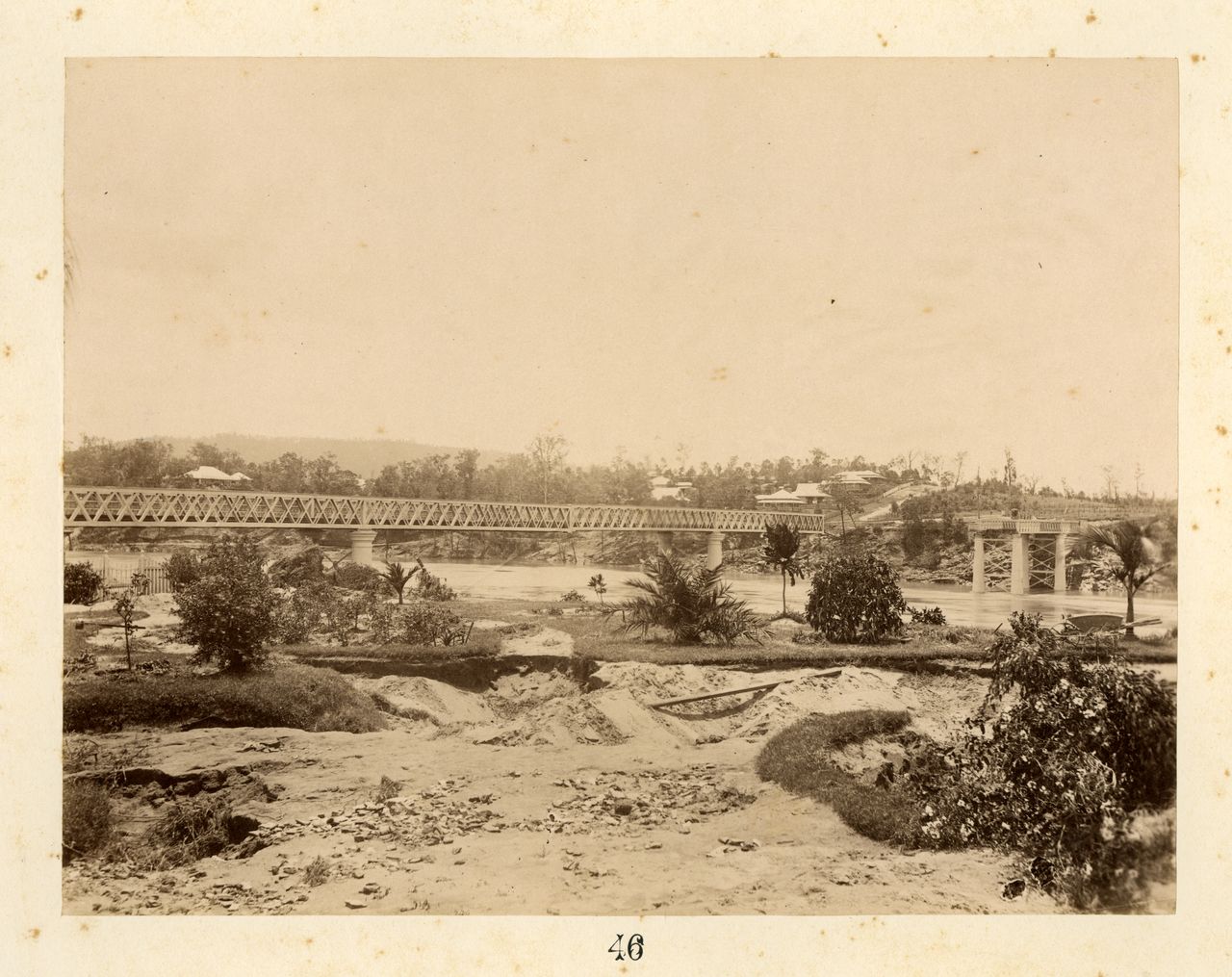
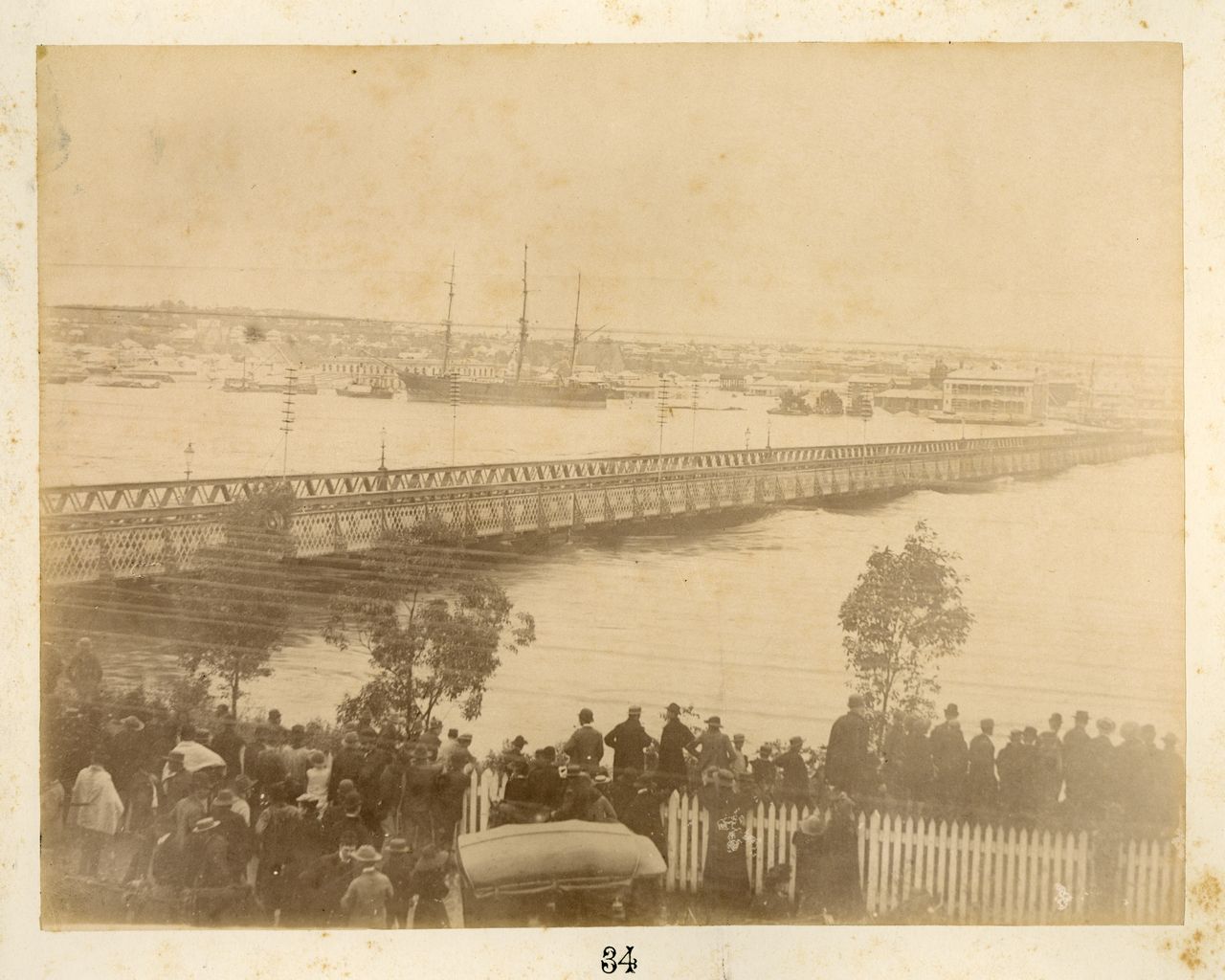
Chillagoe Railway line
Built by the Chillagoe Company, the Chillagoe Railway line in far north Queensland was at one time the largest privately owned railway in Australia. From 1898 to 1915, 307 miles (510 kilometres) of the line was built, connecting with the Queensland Government railway at Mareeba.[ii] Built to serve the company’s mines and copper smelters at Chillagoe, it eventually provided services for passengers, goods and parcels and other mining companies.[iii]
The railway was constructed under the Mareeba to Chillagoe Railway Act 1897. The company’s first priority was the construction of the 102 mile railway from Mareeba to Chillagoe, which commenced in August 1898 and when opened on 4 March 1901 had cost a total of £381,902 5s. 0d.[iv]
A number of railway bridges were built between Mareeba to Chillagoe, including four steel bridges, using girdles from the Brisbane bridges, over the Walsh River, Emu Creek, Oakey Creek, and Granite Creek. The bridges are still used today with the exception of the Oakey Creek Railway Bridge, which was replaced around 2012.[v]
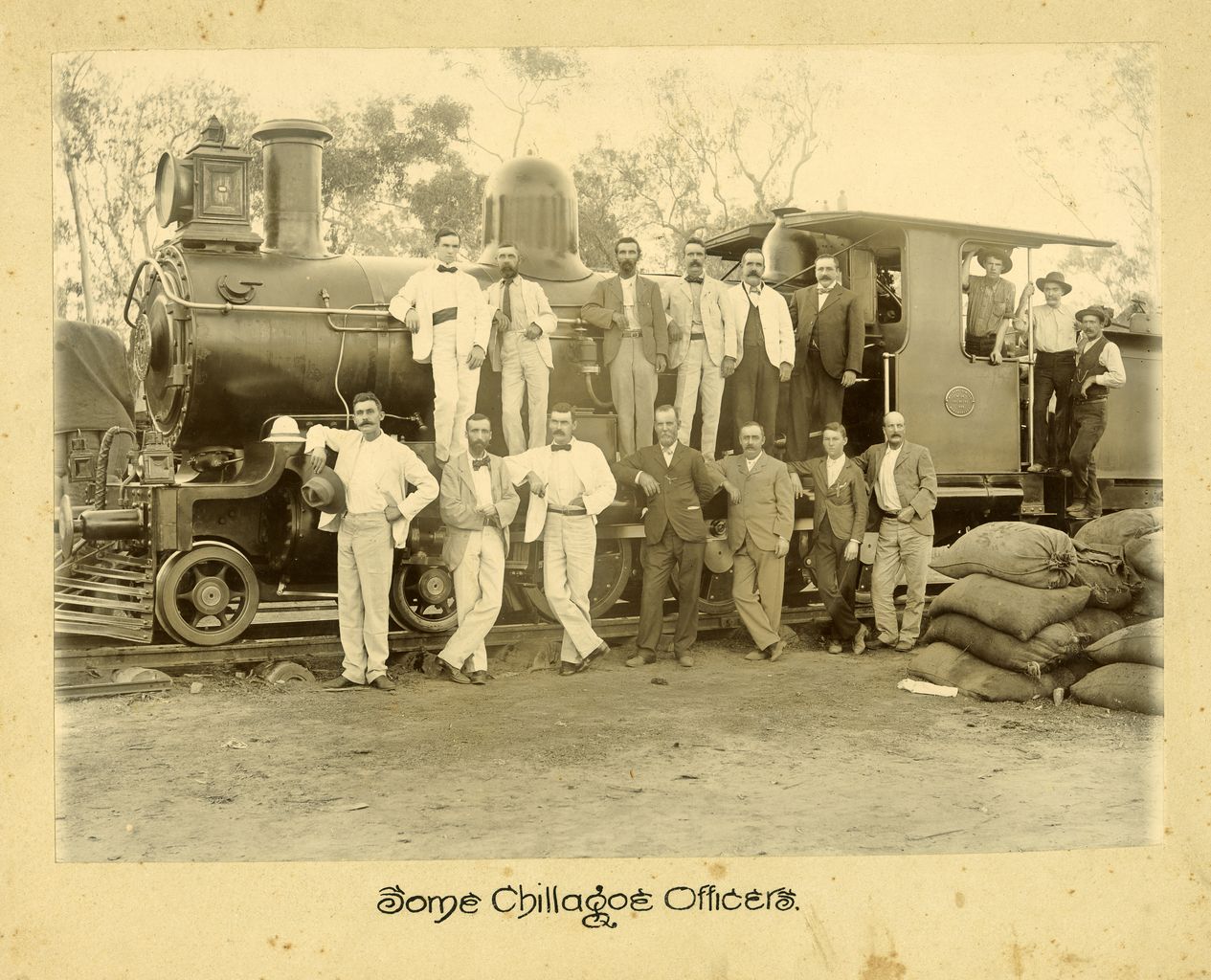
Walsh River
Situated on the Featherbed Range between Mareeba and Parada, the Walsh River Bridge is 350 feet in length and stands 40 feet above the stream. It consists of three 82 feet and two 52 feet lattice truss spans, carried on cement concrete piers, and sunk to the rock.[vi]
The ironwork was put together in Brisbane and shipped to Cairns on the SS. Barrier in 1899.[vii]

Emu Creek
Situated just east of Lappa Junction before Petford station and about 97 miles west of Cairns, the Emu Creek Bridge is a Walsh River Bridge tributary built in 1900, partly of girders from the old Indooroopilly Bridge and the Victoria Bridge.[ix] The bridge has five piers of masonry and granite and three 26.4 meter lattice truss spans and timber approaches.[x]
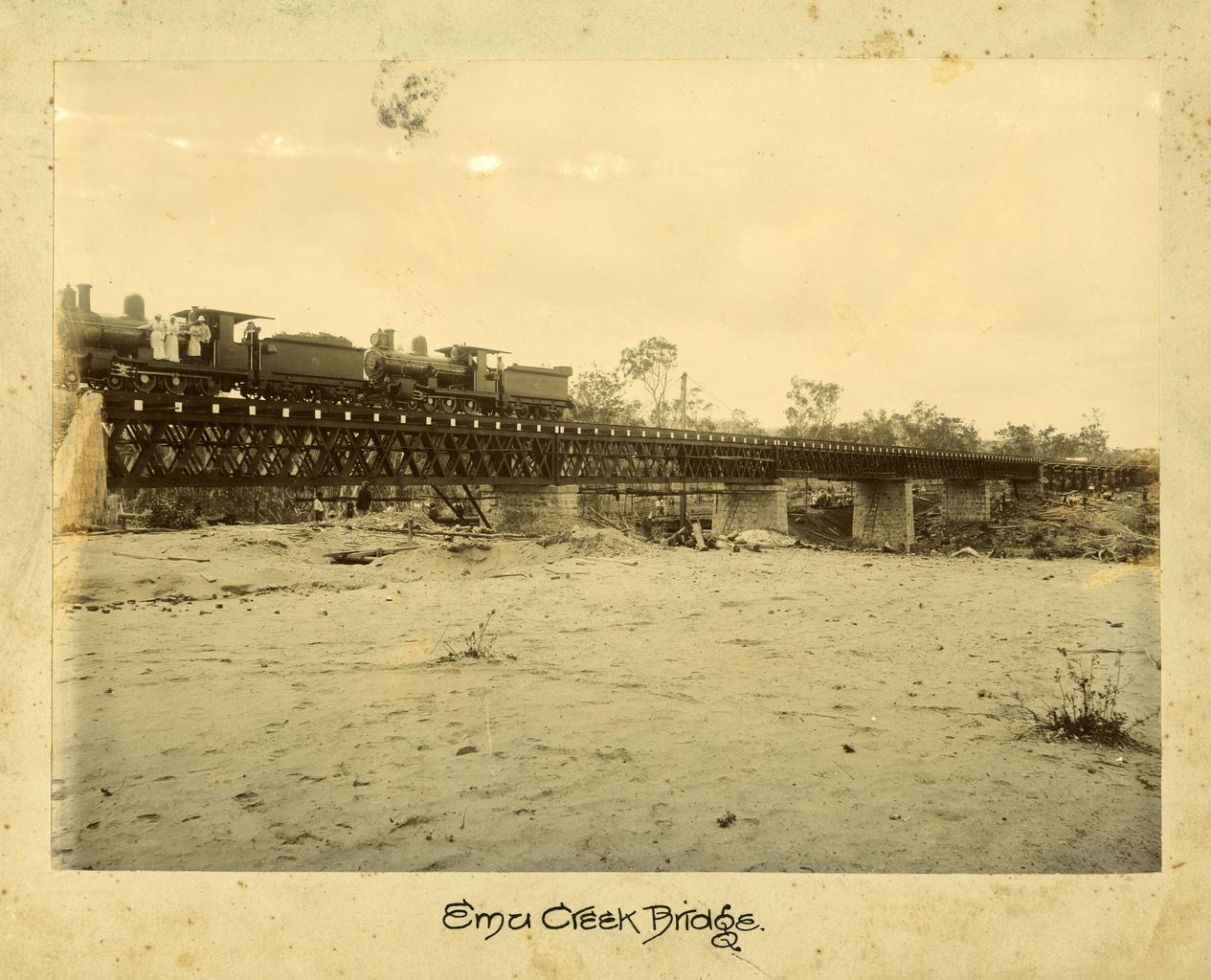
Oakey Creek
Over Oakey Creek, between Petford and Lappa, was a single 82 feet span steel bridge supported by concrete piers.[xii]
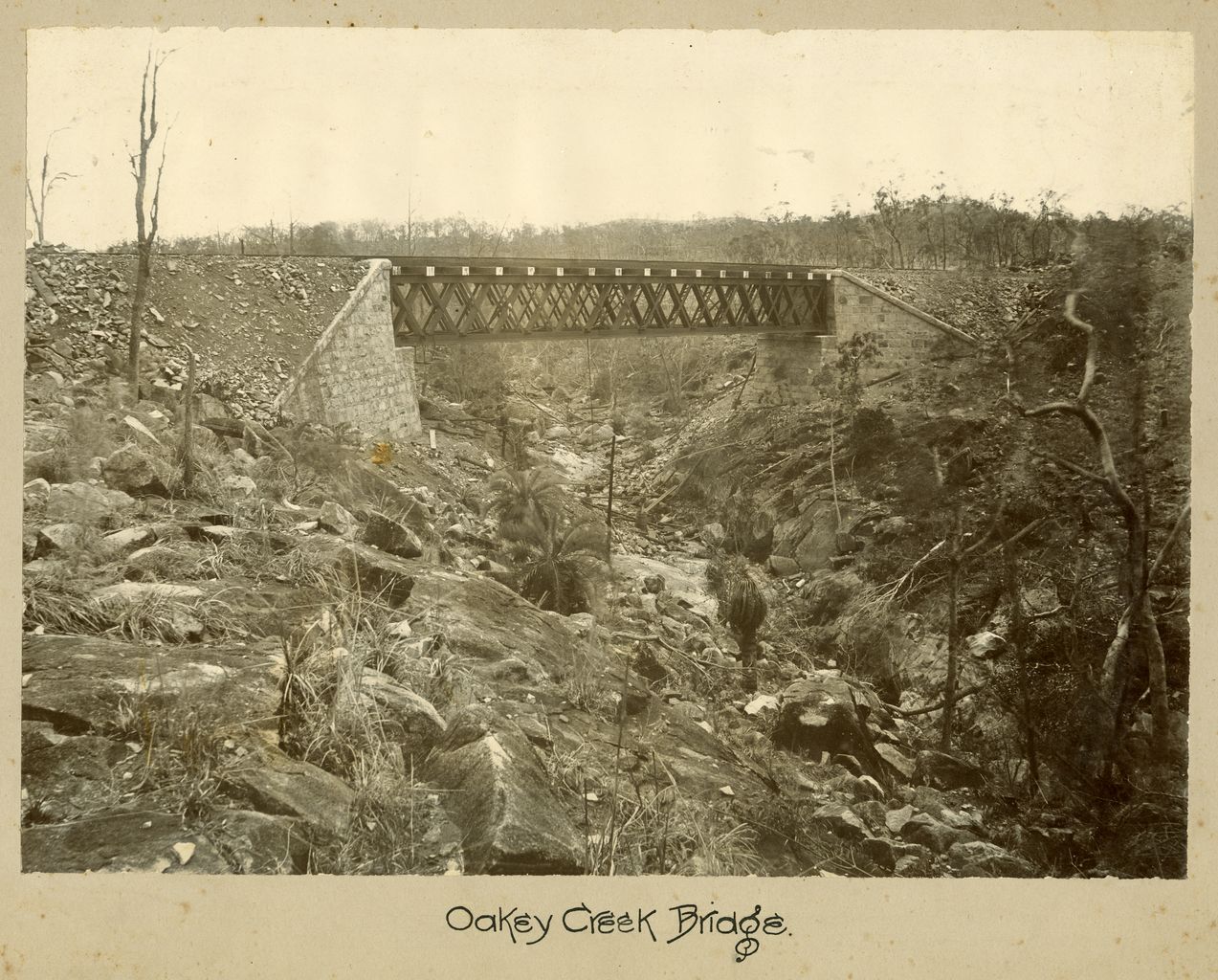
Granite Creek
The Granite Creek Bridge was built with timber approaches and one steel span supported by two stone pitched piers. Most of the timber has since been replaced.[xiii]
Map of Chillagoe Railway line in 1901
Map shows the locations of the railway stations from Mareeba to Chillagoe in 1901, as well as where the four bridges are located, and some scenic views of the Chillagoe Railway line. Click on the icons on the map to view images.
Discover more
View digitised images of the 1893 Brisbane floods and Queensland railway lines in UQ eSpace (original images held in our Fryer Library):
- Curated collection: Brisbane floods 1893
- Album of 1893 floods across Queensland from the Philp Family Collection, UQFL28
- Photograph album of Cairns Railway, Barron Falls and Kuranda, F3377
- Photographs of Queensland towns c1880s-1916, which includes Queensland railway lines, from the Sidney Richardson Collection, UQFL243 and James Cossar Smith Collection, UQFL11
- Photographs of historic European bridges, [18--] - [191-?] collected by Romeo Lahey, F3334
[i] Telegraphic News (1899, May 24). The Northern Miner, p. 3. Retrieved December 22, 2016, from http://nla.gov.au/nla.news-article84868256
[ii] Queensland Rail, “Historical timeline: 1900 – 1950s”, 2015, Retrieved from https://www.queenslandrail.com.au/ourhistory/150years/1900-1950s.
[iii] Ellis, R. F. (1976, December). The Chillagoe Rwaily & Mining Co. Australian Railway Historical Society Bulletin, XXVII(no. 470), 270.; Ellis, R. F. (1977, March). The Chillagoe Rwaily & Mining Co. Australian Railway Historical Society Bulletin, XXVIII(no. 473), 62.
[iv] Kerr, R. S. (1979). John Moffat's Empire. St. Lucia: J.D. & R.S. Kerr.
[v] Kemp, Wil (The Savannahlander), personal communication, February 1, 2018. The Savannahlander is a long distance passenger transport service. Its itinerary includes stops at some of the Chillagoe Railway stations.
[vi] Chillagoe Railway and mines. (1900, June 28). The Age, p. 7. Retrieved December 21, 2016, from http://nla.gov.au/nla.news-article190062181; Railway engineer's report. (1900, June 25). The North Queensland Register, p. 38. Retrieved December 22, 2016, from http://nla.gov.au/nla.news-article82336632
[vii] The Chillagoe Railway. (1899, October 16). The North Queensland Register, p. 31. Retrieved December 22, 2016, from http://nla.gov.au/nla.news-article81646210
[viii] Ellis, R. F. (1977, March). 62-72.
[ix] Ellis, R. F. (1976, December). 270-221.; Unidentified (1916). Page 28 of the Queenslander Pictorial, supplement to The Queenslander, 25 March, 1916. John Oxley Library, State Library of Queensland. Retrieved from http://hdl.handle.net/10462/comp/5722
[x] O'Connor, C. (1985). Spanning two centuries : Historic bridges of Australia. St. Lucia; University of Queensland Press.
[xi] Ellis, R. F. (1976, December). 270-221.
[xii] Railway engineer's report. (1900, June 25). The North Queensland Register, p. 38. Retrieved December 22, 2016, from http://nla.gov.au/nla.news-article82336632
[xiii] Rippin, Chris and Kemp, Will, personal communication, February 2, 2018.